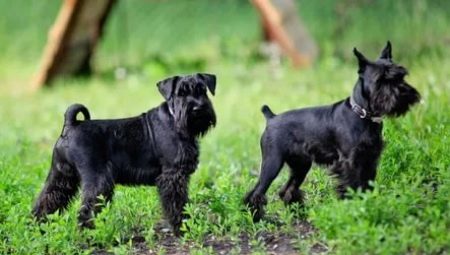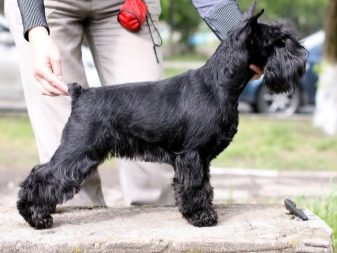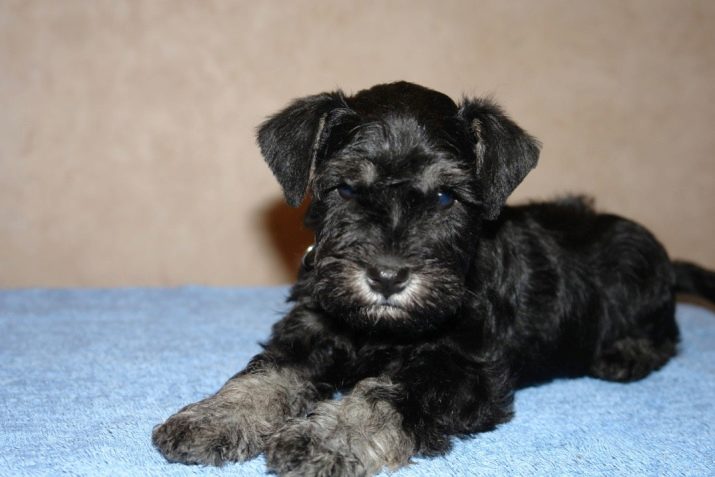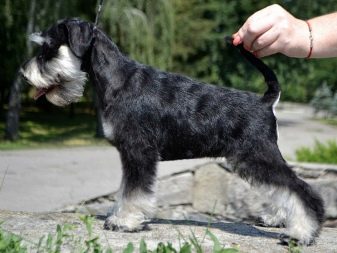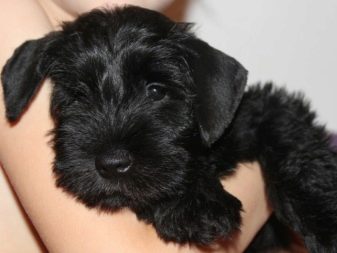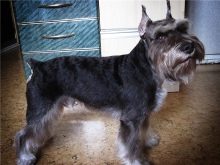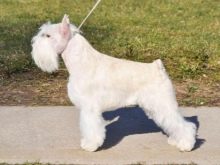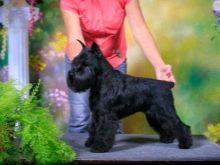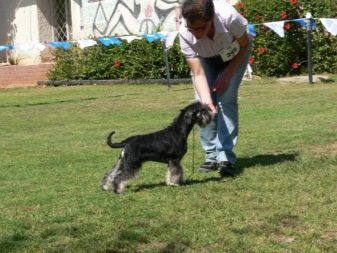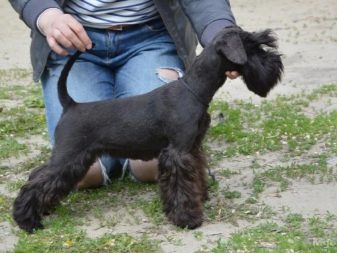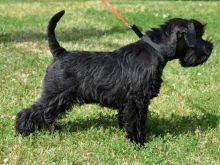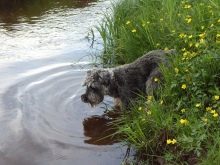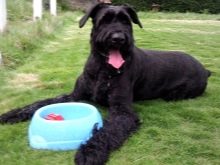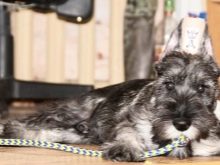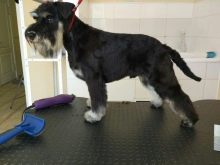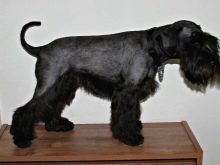There are a great many service dogs in the world - from bloodhounds to rescue divers. Today we will talk about the smallest representatives of this group of dogs - miniature schnauzers.
A bit of history
Miniature Schnauzers are a dwarf schnauzer variety. It is not known for certain how and when this breed was bred. There are only weighty assumptions that the proto-parents of miniature schnauzers were mittelshnautsery - the larger representatives of schnauzers. The exterior is the same, the difference is only in size.
The official date for the presentation of this breed to the general public is 1888, the birthplace of the Schwab district.
Description
Growth of an adult individual does not exceed 35 cm, weight - ranging from 4 to 8 kg. Females are slightly smaller than males.
- Ears close to the head, with a twist. They are often cropped - to improve the appearance and enhance hearing.
- The muzzle is wedge-shaped, with a rectangular beard. Eyebrows thick, hanging over the eyes - requires careful and regular care.
- Build muscular, strong. The croup is rounded, the belly is taut.
- Paws are small in size with fingers pressed together. If there are extra fingers on the hind limbs, they are removed surgically at an early age (within 1-2 weeks after birth).
- The tail can be short from birth (1 vertebra) or long, but in this case it is stopped by the puppy, leaving a segment of 2-3 vertebrae.
- Wool hard, many compare it with a wire. This structure of the coat is laid in the genes of the dog.
The coat color can be different, but only four main colors are specified in the standard:
- pure black color (both wool and undercoat);
- coal black with silver;
- "Pepper with salt";
- pure white.
The color of the coat does not affect the character or other qualities of the dog, so if you have a puppy of a different color (for example, chocolate), nothing will prevent you from raising a beautiful friend and protector from it. Just for breeding such dogs are not used.
Character
Miniature Schnauzer is a rather peaceful pet, docile and cheerful. Loves active pastime, games in the fresh air. They are not recommended to start people with disabilities and families with small children - although the level of aggression in this breed of working dogs is low, it requires respect for themselves and their personal space.
Among the advantages of miniature schnauzers should be noted:
- good learning ability (subject to the timely start of training);
- non-conflict - gets along with other pets - cats, dogs and others, without any problems, does not break down in pursuit of animals on the street;
- strangers and strangers are wary, but do not show aggression without a reason.
Among the disadvantages of such features as:
- excessive curiosity - can lead to trouble;
- empty barking (for any minor reason or no reason at all);
- digging holes and holes - if you do not provide care for the puppy, it can ruin the flooring, carpet, or dig up the yard / garden.
Conditions for content
Before you start a puppy, think about how to provide him with normal conditions.
- First of all, take care to purchase the necessary equipment - dishes, leash, collar.
- For food and water, bowls should be separate, preferably metal (stainless steel) - they are much more durable and more practical than plastic dishes.
- Prepare the place where the puppy will sleep. Do not spoil him, do not take him to bed or on the sofa.Lay him something soft and warm, protect the bed from drafts.
- To leash and collar dog need to be taught from an early age. Of course, babies need a collar of soft leather, and the leash is not too long - so that the pet does not run far or is not tangled with its paws. As you grow older, the reason can be lengthened, and the collar can be replaced with metal or hard leather.
- Consult with your veterinarian what medicines for dogs should always be on hand and prepare them.
- Adjust your daily routine to walk your pet and play with it. The dog requires an active pastime and attention of the owner.
- Get your pet toys, which he can sharpen his teeth, otherwise he will spoil the furniture and other things.
What to feed?
For puppy nutrition, it is best to consult a veterinarian. Of course, a lot depends on your financial capabilities, but there are a few subtleties that you should know.
- Choosing a diet (ready-made food or organic foods), stick to it. Do not jump from one food to another or mix rations.
- If you are a natural food supporter, remember that in this case the dog may not receive the minerals and biologically active substances it needs, so be sure to add vitamin preparations to food. In the finished feed mixtures they are already included in the composition.
- Meat and meat by-products, vegetables, cereals and cereal (a source of calcium) must be included in the natural diet.
- If funds allow, choose ready-made holistic-class feeds - they are made only from high-quality natural products and do not contain any synthetic additives (preservatives or flavors) that may adversely affect your pet's health.
How to care?
Before purchasing a pet, consult with the breeder what kind of care he needs. Peculiarities of wool cover dictate the need for some procedures that another dog may not need.
The list of these additional manipulations includes the following.
- Grooming. Comprehensive arrangements for the care of wool, teeth, claws, ears and eyes of a pet.
- Trimming. The so-called forced shedding of dead wool. Especially relevant for breeds with hard wool. It is advisable to spend at least 2 times a year. Even if you regularly cut your dog, miniature schnauzers need trimming.
- If necessary, trim the bushy eyebrows and pet's beard. Too thick and long eyebrows climb into the eyes and cause their irritation.
- Every week, rinse the paws, beard and head of the dog. Full washing is not so often required, but partial washing is necessary, as in these parts of the body often pieces of food, dirt and litter often get stuck.
- For swimming pick up mild shampoo with conditioner.
- Keep an eye out for claws, carefully trim them with nail clippers as needed.
- 2 times a year at the vet go cleansing of paraanal glands.
- Cropped ears do not require as much attention as uncropped, but still regularly inspect them and wipe with a cotton pad dipped in lotion.
- Do not forget also about vaccinations and examinations at the vet. Find out in advance the schedule of necessary vaccinations and do not miss them without good reason. For any health problems, contact a specialist in order to prevent complications.
And most importantly - love your pet, and believe me, he will respond to you in return.
Look at the beauty of a black puppy can be further.
